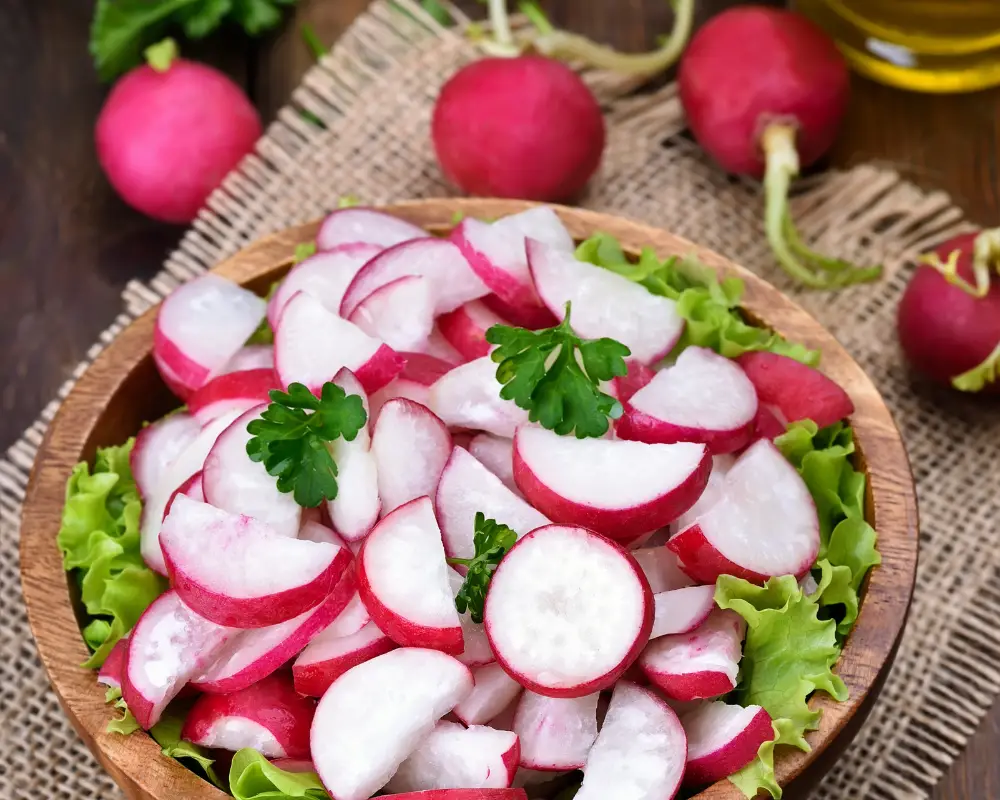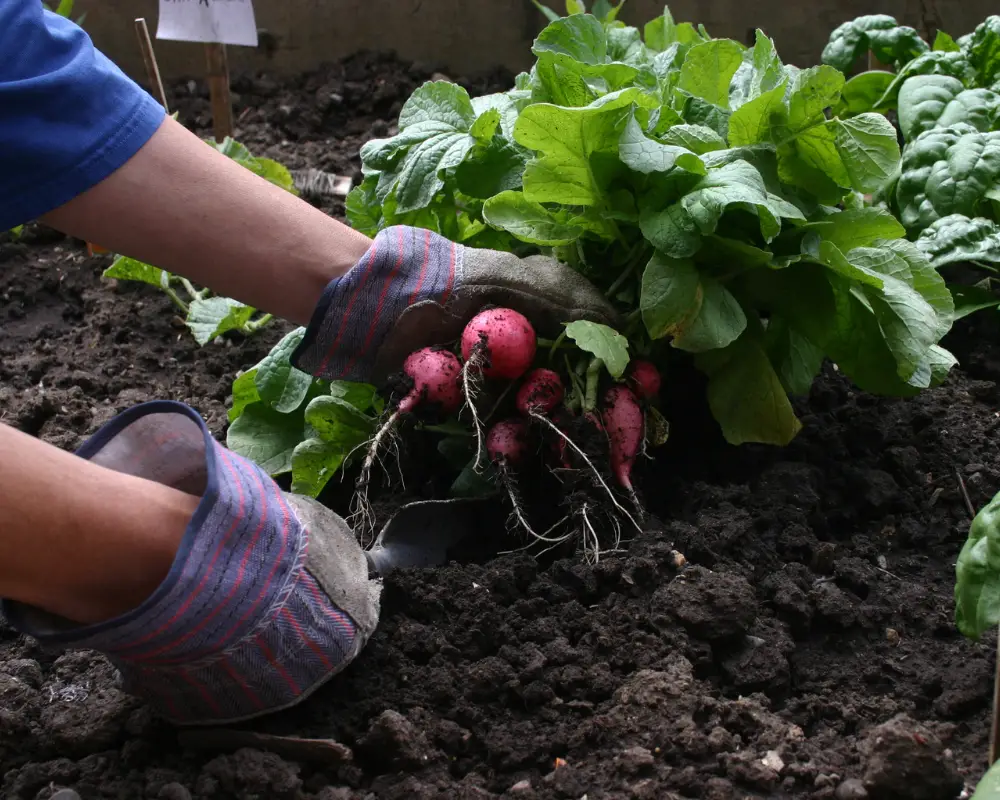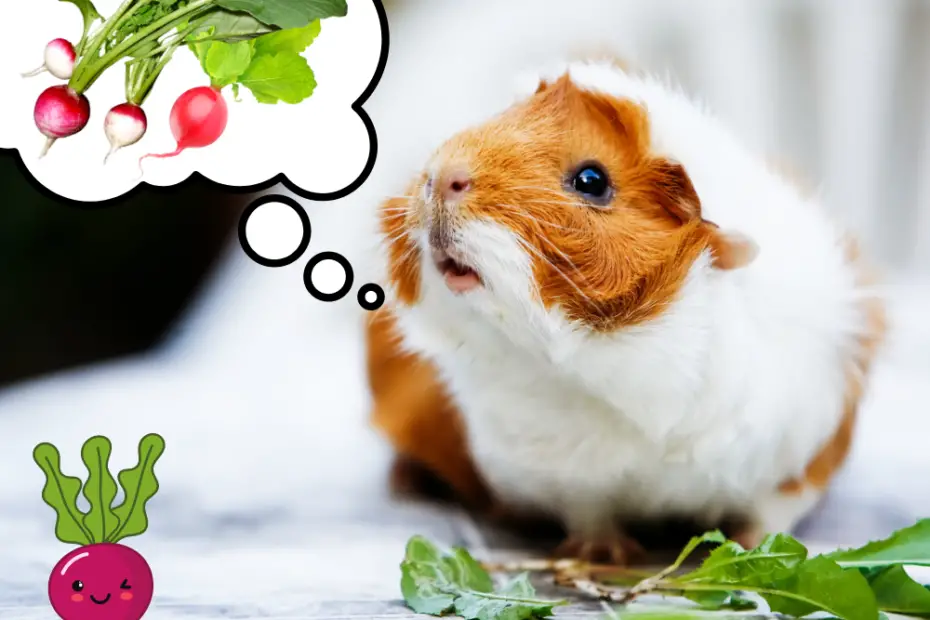Radishes are crisp, crunchy vegetables that are often enjoyed by humans in salads and other dishes.
But what about our furry friends, guinea pigs? Let’s explore whether radish is a suitable addition to their diet.
Is it safe for guinea pigs to eat radish?
Yes, radish is generally safe for guinea pigs to eat in moderation.
However, like any new food, it’s essential to introduce radish gradually and observe your guinea pig for any adverse reactions.
What are the nutritional benefits of feeding radish to guinea pigs?
Radishes are rich in vitamin C, which is essential for guinea pigs since they cannot produce this vitamin on their own.
Additionally, radishes contain fiber, potassium, and antioxidants, which can contribute to overall health and well-being.
Can guinea pigs eat both the radish leaves and the root?
Yes, both the leaves and the root of the radish are safe for guinea pigs to eat. The leaves contain nutrients similar to those found in the root and can provide additional variety to your guinea pig’s diet.
Can radish be a regular part of a guinea pig’s diet?
While radish can be included as an occasional treat, it should not make up a significant portion of your guinea pig’s daily diet.
It’s best to offer radish in small quantities a few times a week as part of a balanced diet that primarily consists of hay, fresh vegetables, and pellets.
How much radish should I feed my guinea pig?
When offering radish to your guinea pig, moderation is key. A small slice or two of radish a couple of times a week should suffice. Remember to monitor your guinea pig’s intake and adjust accordingly based on their individual preferences and digestive health.
Are there different types of radish that are safe for guinea pigs?
Yes, there are various types of radish, including red radish, daikon radish, and watermelon radish, among others. All these varieties are safe for guinea pigs to consume, but it’s essential to avoid any flavored or seasoned radish, as these may contain additives that could be harmful to your pet.

How should I prepare radish for my guinea pig?
Before offering radish to your guinea pig, be sure to wash it thoroughly to remove any pesticides or dirt.
You can then slice the radish into small, bite-sized pieces that are easy for your guinea pig to eat. Avoid adding any dressings or seasonings.
Are there any risks or potential side effects associated with feeding radish to guinea pigs?
While radish is generally safe for guinea pigs, some may experience digestive upset if they consume too much or if their digestive systems are sensitive.
Additionally, guinea pigs may develop allergies to certain foods, so it’s essential to monitor them closely when introducing radish for the first time.
Can radish help with digestive issues or other health problems in guinea pigs?
Radishes contain fiber, which can aid in digestion and help prevent constipation in guinea pigs.
However, it’s not a cure-all for digestive issues, and it’s essential to consult a veterinarian if your guinea pig is experiencing any health problems.
What should I do if my guinea pig shows signs of allergic reaction after eating radish?
If your guinea pig exhibits symptoms such as itching, swelling, or difficulty breathing after consuming radish, it’s crucial to remove the food immediately and contact your veterinarian. Allergic reactions can be serious and require prompt medical attention.
Are there any other vegetables or greens that I can feed my guinea pig along with radish for a balanced diet?
Yes, there are plenty of other safe fruits, vegetables, and greens that you can offer your guinea pig to ensure they receive a balanced diet. Some options include bell peppers, carrots, cucumbers, and leafy greens like lettuce and spinach.
How often should I feed radish to my guinea pig?
Radish should be fed to your guinea pig in moderation, a few times a week at most. It’s essential to vary their diet and offer a wide range of fresh vegetables and greens to ensure they receive all the nutrients they need.

Here’s a fun fact about radish:
Did you know that radishes come in a variety of shapes and colors?
While most people are familiar with the round, red radishes commonly found in supermarkets, there are also radishes that are long and cylindrical, round and white, or even purple and pink!
These colorful variations can add a fun and whimsical touch to any garden or salad bowl, making radishes not only delicious but also aesthetically pleasing.
Conclusion:
In conclusion, radish can be a tasty and nutritious addition to your guinea pig’s diet when offered in moderation. By following these guidelines and monitoring your pet’s health and preferences, you can ensure they enjoy a happy and healthy life.
